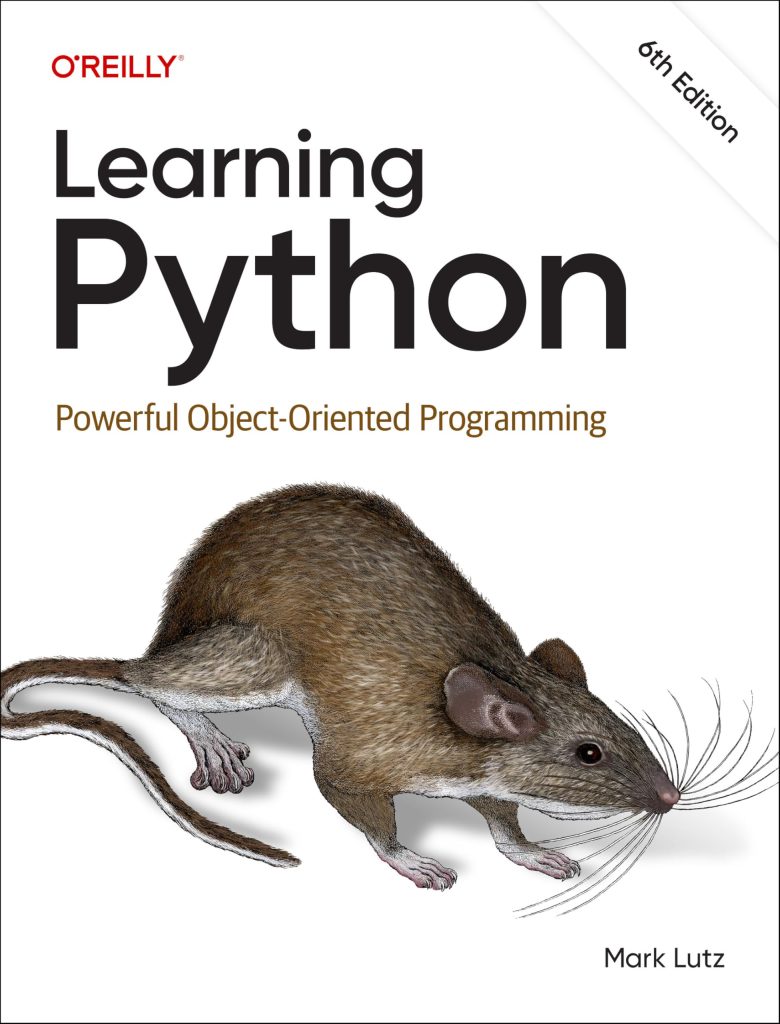
The fit_generator method in Keras serves as a powerful tool for training deep learning models on large datasets. It allows for the efficient handling of data streams that do not fit entirely into memory, offering a smooth interface for training models with real-time data augmentation and preprocessing. When deploying fit_generator, several advanced techniques can enhance training efficacy and model performance.
One of the primary advantages of using fit_generator is its ability to leverage Python generators, which yield batches of data on-the-fly. That’s particularly useful for large datasets, as it prevents memory overload and allows for dynamic data augmentation. For instance, the generator could be set up to perform real-time transformations on the input images, such as rotations, flips, and shifts, creating an augmented dataset that helps improve the model’s robustness.
Here’s an example of how to set up a simple image data generator using Keras:
from keras.preprocessing.image import ImageDataGenerator
# Create an instance of ImageDataGenerator with augmentation
datagen = ImageDataGenerator(
rotation_range=40,
width_shift_range=0.2,
height_shift_range=0.2,
shear_range=0.2,
zoom_range=0.2,
horizontal_flip=True,
fill_mode='nearest'
)
# Assuming 'x_train' contains the training images
# Fit the generator on the training data
datagen.fit(x_train)
In addition to data augmentation, another advanced technique is the use of multiple workers to load data in parallel. Setting the workers parameter in fit_generator can significantly speed up the training process by using multiple CPU cores. Here’s how you might implement that:
model.fit_generator(
datagen.flow(x_train, y_train, batch_size=32),
steps_per_epoch=len(x_train) / 32,
epochs=50,
workers=4 # Use 4 workers for loading data
)
Furthermore, managing the learning rate dynamically during training can yield significant improvements. Using learning rate schedulers or callbacks can help adjust the learning rate based on the training progress. For example, you can implement a callback that reduces the learning rate when a plateau in validation loss is detected:
from keras.callbacks import ReduceLROnPlateau
# Instantiate the callback
reduce_lr = ReduceLROnPlateau(monitor='val_loss', factor=0.2, patience=5, min_lr=1e-6)
# Fit the model with the callback
model.fit_generator(
datagen.flow(x_train, y_train, batch_size=32),
steps_per_epoch=len(x_train) / 32,
epochs=50,
callbacks=[reduce_lr]
)
By integrating these advanced techniques, you can significantly enhance the training process using fit_generator. Whether through real-time data augmentation, parallel data loading, or dynamic learning rate adjustments, these strategies provide a robust framework for tackling complex training challenges in deep learning.
Understanding the fit_generator Methodology
The fit_generator method in Keras is built around the concept of Python generators, which are an elegant way to handle large datasets that are impractical to load entirely into memory. Generators yield batches of data on-the-fly, making them indispensable in scenarios where data size exceeds RAM limitations or when performing real-time data augmentation. This capability allows for an efficient training loop that can adapt to the model’s needs without sacrificing performance.
When using fit_generator, it’s essential to understand the parameters it accepts. These include the generator itself, steps_per_epoch, epochs, and various callbacks that can be leveraged to enhance training. The generator can be any callable that yields data batches; Keras provides ImageDataGenerator for images, but custom generators can also be created for other types of data.
Here’s a closer look at how to create a custom generator:
import numpy as np
def custom_data_generator(batch_size):
while True: # Loop indefinitely
# Generate dummy data
x = np.random.random((batch_size, 64, 64, 3)) # Example shape for images
y = np.random.randint(0, 2, (batch_size, 1)) # Example binary labels
yield x, y # Yield a batch of data
Once the generator is in place, it can be utilized within the fit_generator method, allowing seamless integration into the training process:
# Using the custom generator
model.fit_generator(
custom_data_generator(batch_size=32),
steps_per_epoch=100, # Total steps to run per epoch
epochs=50
)
A significant aspect of the fit_generator methodology is its compatibility with data augmentation strategies. The ImageDataGenerator class serves as a robust tool for this purpose, allowing for real-time augmentation that can enrich the training dataset without the need to store additional images. That is achieved by providing a variety of transformations that can be applied randomly to each batch of data during training.
Moreover, the generator can also facilitate the use of different data types—images, text, or even tabular data—by simply modifying the way that batches are produced. This flexibility makes fit_generator a powerful asset in the arsenal of any deep learning practitioner, especially when combined with the right preprocessing techniques.
To summarize, understanding the underlying methodology of fit_generator allows you to set up a sophisticated training regime that can tackle large datasets efficiently. By using the power of Python generators, dynamic data loading, and real-time augmentation, you can significantly enhance the training process, leading to improved model performance and generalization capabilities.
Optimizing Data Input Pipelines
Optimizing the data input pipeline when using fit_generator can dramatically enhance the overall training efficiency and model performance. The essence of this optimization lies in ensuring that the model is fed with data as quickly as it can process it, without bottlenecks that could arise from slow data loading or preprocessing.
One of the key strategies for optimizing data input pipelines is to ensure that data is preprocessed in parallel while the model is training. This can be achieved by employing a combination of data generators and the workers parameter in the fit_generator method. By increasing the number of workers, you allow the training process to utilize multiple CPU cores for loading and preprocessing the data at once, which can lead to a significant reduction in the idle time of the GPU.
Here’s an example of how to implement this:
model.fit_generator(
datagen.flow(x_train, y_train, batch_size=32),
steps_per_epoch=len(x_train) / 32,
epochs=50,
workers=4, # Increase the number of workers for faster data loading
use_multiprocessing=True # Enable multiprocessing for better performance
)
In addition to parallel processing, you should also think the impact of data shuffling. Shuffling the training data before each epoch can help to mitigate the risk of overfitting by ensuring that the model does not see the same patterns in the same order during each training cycle. The ImageDataGenerator class allows you to specify shuffle=True, which automatically randomizes the order of data batches during training.
datagen = ImageDataGenerator(
rotation_range=40,
width_shift_range=0.2,
height_shift_range=0.2,
shear_range=0.2,
zoom_range=0.2,
horizontal_flip=True,
fill_mode='nearest',
shuffle=True # Ensures the data is shuffled during training
)
Moreover, preloading data can further enhance performance. If the dataset is not excessively large, consider loading it into memory before the training starts. This approach minimizes the overhead of loading data from disk during training, which can be a significant bottleneck when working with large datasets. However, ensure that your system has sufficient memory to accommodate the dataset.
Lastly, implementing efficient data formats can also contribute to speed improvements. For example, using TensorFlow’s TFRecord format allows for faster reading and preprocessing of data since it is optimized for TensorFlow pipelines. Here’s a brief overview of how you can create TFRecords:
import tensorflow as tf
def serialize_example(image, label):
feature = {
'image': tf.train.Feature(bytes_list=tf.train.BytesList(value=[image])),
'label': tf.train.Feature(int64_list=tf.train.Int64List(value=[label])),
}
example_proto = tf.train.Example(features=tf.train.Features(feature=feature))
return example_proto
# Writing TFRecords
with tf.io.TFRecordWriter('data.tfrecord') as writer:
for img, lbl in zip(images, labels):
example = serialize_example(img.tostring(), lbl)
writer.write(example.SerializeToString())
By focusing on these optimization strategies—parallel data loading, shuffling, preloading data, and employing efficient data formats—you can significantly streamline your data input pipeline. This not only speeds up the training process but also enhances model performance by ensuring that the model can learn from a diverse set of data points efficiently.
Implementing Custom Callbacks for Enhanced Training
Custom callbacks in Keras can be a game-changer when it comes to enhancing the training process. These callbacks provide a way to inject custom behavior during the training loop, allowing for dynamic adjustments and monitoring of the model’s performance in real time. By implementing callbacks, you can fine-tune the training process to better suit your model’s needs and objectives.
One of the most common use cases for custom callbacks is to monitor the training and validation loss, making it possible to halt training early if the model begins to overfit. The EarlyStopping callback is a built-in Keras feature that automatically stops training when a monitored metric has stopped improving, thus saving computational resources and preventing overfitting. You can configure it to monitor validation loss and set a patience parameter that defines how many epochs to wait before stopping:
from keras.callbacks import EarlyStopping
early_stopping = EarlyStopping(monitor='val_loss', patience=5, verbose=1)
model.fit_generator(
datagen.flow(x_train, y_train, batch_size=32),
steps_per_epoch=len(x_train) / 32,
epochs=50,
callbacks=[early_stopping]
)
Another useful callback is the ModelCheckpoint, which saves the model at specified intervals during training. That’s particularly beneficial if you want to ensure that you have the best version of your model saved based on validation performance:
from keras.callbacks import ModelCheckpoint
model_checkpoint = ModelCheckpoint('best_model.h5', monitor='val_loss', save_best_only=True, verbose=1)
model.fit_generator(
datagen.flow(x_train, y_train, batch_size=32),
steps_per_epoch=len(x_train) / 32,
epochs=50,
callbacks=[model_checkpoint]
)
Custom callbacks can also be tailored to log additional metrics, visualize training progress, or adjust hyperparameters dynamically. Suppose you want to implement a callback that logs the accuracy and loss at the end of each epoch. This can be done by subclassing the Callback class:
from keras.callbacks import Callback
class CustomLogger(Callback):
def on_epoch_end(self, epoch, logs=None):
print(f'Epoch {epoch + 1}: loss = {logs["loss"]:.4f}, accuracy = {logs["accuracy"]:.4f}')
custom_logger = CustomLogger()
model.fit_generator(
datagen.flow(x_train, y_train, batch_size=32),
steps_per_epoch=len(x_train) / 32,
epochs=50,
callbacks=[custom_logger]
)
Moreover, you can create callbacks that adjust the learning rate based on the training progress. For example, a callback that reduces the learning rate when a plateau in the validation loss is detected can help the model converge more effectively:
class DynamicLearningRate(Callback):
def __init__(self, factor=0.5, patience=2):
super(DynamicLearningRate, self).__init__()
self.factor = factor
self.patience = patience
self.wait = 0
self.best = float('inf')
def on_epoch_end(self, epoch, logs=None):
current = logs.get('val_loss')
if current = self.patience:
new_lr = self.model.optimizer.lr * self.factor
print(f'nReducing learning rate to {new_lr:.6f}.')
self.model.optimizer.lr.assign(new_lr)
self.wait = 0
dynamic_lr = DynamicLearningRate()
model.fit_generator(
datagen.flow(x_train, y_train, batch_size=32),
steps_per_epoch=len(x_train) / 32,
epochs=50,
callbacks=[dynamic_lr]
)
By implementing custom callbacks, you unlock a world of possibilities for enhancing your training process. Whether through logging performance metrics, saving the best model, or dynamically adjusting hyperparameters, these callbacks enable you to create a more responsive and efficient training workflow, ultimately leading to improved model performance and better generalization.
Evaluating Model Performance and Adjusting Parameters
Evaluating model performance during training very important for understanding how well the model is learning and whether adjustments are necessary. When using the fit_generator method, Keras provides built-in support for monitoring various metrics, including loss and accuracy, during the training process. This enables a more dynamic approach to model training, where you can make informed decisions based on real-time feedback.
One of the first steps in evaluating model performance is to define the metrics you want to monitor. For instance, in a classification task, you might want to track both the training and validation accuracy to ensure your model is not overfitting to the training data. You can specify these metrics when compiling your model:
model.compile(optimizer='adam',
loss='binary_crossentropy',
metrics=['accuracy'])
With the model compiled, you can proceed to train it using fit_generator. As the model trains, Keras will automatically log the specified metrics for each epoch. To keep track of these metrics, you can use callbacks such as TensorBoard, which provides a visual interface to monitor training progress over time.
from keras.callbacks import TensorBoard
tensorboard = TensorBoard(log_dir='./logs')
model.fit_generator(
datagen.flow(x_train, y_train, batch_size=32),
steps_per_epoch=len(x_train) / 32,
epochs=50,
validation_data=(x_val, y_val),
callbacks=[tensorboard]
)
In addition to monitoring metrics, evaluating model performance also entails analyzing the learning curves generated during training. By observing the training and validation loss over epochs, you can identify potential issues such as overfitting or underfitting. If the training loss continues to decrease while the validation loss starts to increase, this is a clear indicator that the model is overfitting. In such cases, you may want to adjust parameters, apply regularization techniques, or implement early stopping to halt training when the validation loss fails to enhance.
For instance, you might visualize the loss curves using Matplotlib:
import matplotlib.pyplot as plt
history = model.fit_generator(
datagen.flow(x_train, y_train, batch_size=32),
steps_per_epoch=len(x_train) / 32,
epochs=50,
validation_data=(x_val, y_val)
)
# Plotting training & validation loss values
plt.plot(history.history['loss'])
plt.plot(history.history['val_loss'])
plt.title('Model loss')
plt.ylabel('Loss')
plt.xlabel('Epoch')
plt.legend(['Train', 'Validation'], loc='upper right')
plt.show()
Evaluating model performance also involves adjusting hyperparameters based on the observed metrics. For example, if the validation accuracy plateaus, it may indicate that the learning rate is too high, causing the model to oscillate around a local minimum. Conversely, a learning rate this is too low can slow down convergence. You can use a learning rate scheduler to adjust the learning rate dynamically based on the performance metrics:
from keras.callbacks import ReduceLROnPlateau
reduce_lr = ReduceLROnPlateau(monitor='val_loss', factor=0.2, patience=5, min_lr=1e-6)
model.fit_generator(
datagen.flow(x_train, y_train, batch_size=32),
steps_per_epoch=len(x_train) / 32,
epochs=50,
callbacks=[reduce_lr]
)
Moreover, after training, it’s essential to evaluate the model on a separate test dataset to gauge its performance on unseen data. This evaluation provides a more accurate picture of how the model will perform in real-world scenarios. Keras makes this simpler with the evaluate_generator method:
test_loss, test_accuracy = model.evaluate_generator(test_datagen.flow(x_test, y_test, batch_size=32))
print(f'Test loss: {test_loss:.4f}, Test accuracy: {test_accuracy:.4f}')
By continuously monitoring metrics, visualizing training progress, and making informed adjustments to hyperparameters, you can ensure that your model training is not only efficient but also effective. This iterative evaluation process is key to building a robust and high-performing deep learning model using Keras.






